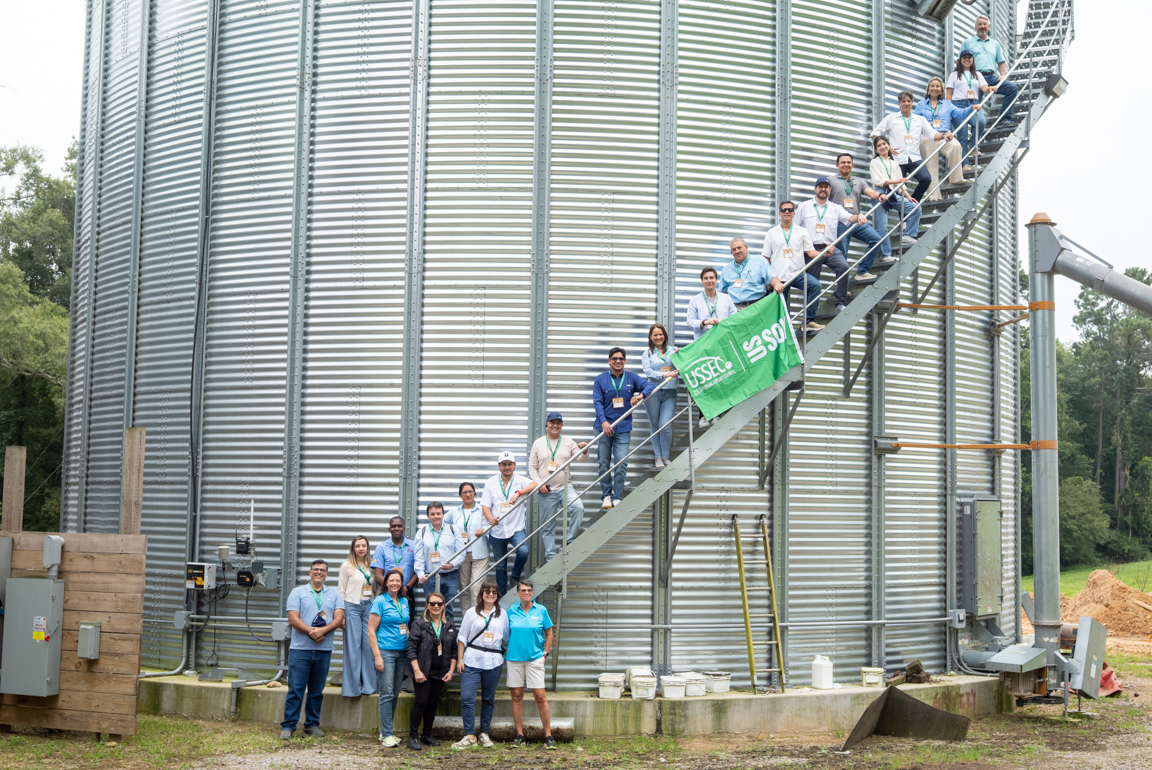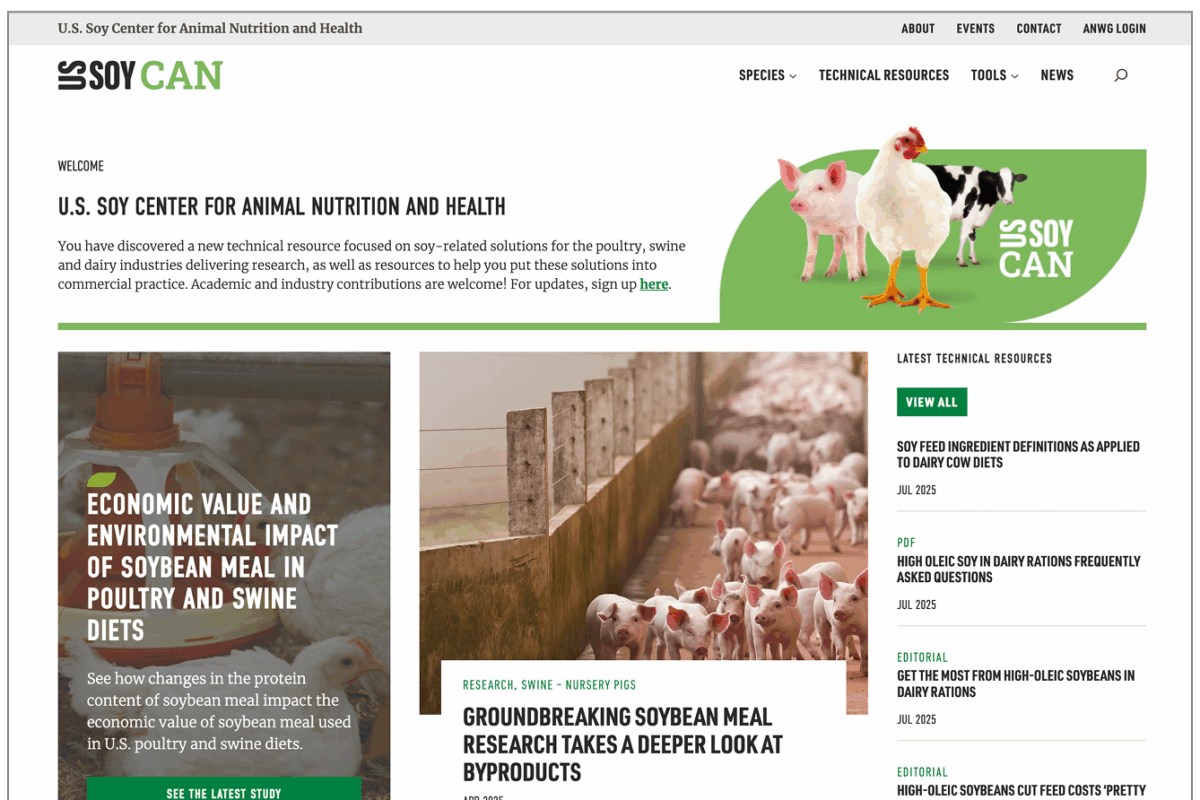Feeding Demand and Our No. 1 Customer

After harvest, it can be easy to get home from the grain elevator, clean out the combine, take a breath and move on to planning the next season. But even as you get your first break in weeks, your soybeans are still hard at work for you.
Moving down the supply chain, U.S. soy makes many stops to build and bolster demand. One of the biggest links in the supply chain is animal agriculture. Here’s why the industry continues depending on U.S. soy:
It’s consistent and top quality
Soy’s composition of essential amino acids sets it apart as the gold standard among plant proteins. Protein yield per acre from soybeans is unparalleled, making it a preferred, economically advantageous source of plant protein for animal feed.
Proteins, made up of amino acids, are about 40% of the U.S. soybean and a primary component of soybean meal, which is 80% of a bean and also contains carbohydrates and minerals. Oil makes up the other 20% of the soybean.
“Other countries want our soybeans for animal agriculture. Countries all over the world need our protein, our soybeans, our soybean meal to grow their livestock,” says Lance Rezac, a checkoff farmer-leader and livestock farmer who raises hogs as well as grows soybeans.
U.S. soybeans provide not only a quality ingredient, but also a consistent one for domestic and international buyers.
“While buyers have traditionally evaluated soy on crude protein alone, that metric is not the best indicator of how the crop will meet the nutritional needs of animals and aquaculture. There are differences in soybean quality by region and country,” says Keenan McRoberts, Ph.D., vice president, science and program strategy for the soy checkoff.
It’s only getting better with time
For years, the checkoff has leveraged your investment to fuel innovations to improve U.S. soybean product quality for an assortment of end uses, creating opportunities to grow your profitability, increase understanding of sustainability and ultimately provide consistent, high-quality products for customers of U.S. soy.
One of the checkoff’s core priorities has been to increase soybean value for animal agriculture, including poultry, swine, dairy, beef and aquaculture. Checkoff investments in product improvement are driving protein gains and improving amino acid composition and other elements of the nutritional bundle delivered by U.S. soybeans based on product demand for animal agriculture.
“Soybean meal and animal agriculture is so much of our market. It’d be counterproductive if our industries weren’t in line with each other, so we make a consistent effort to stay on the same page,” says Rezac. “We want to offer them an optimal peak protein so animal agriculture can achieve optimal peak performance.”
Collaborative investments with a variety of partners ensure increased shared value in U.S. soy throughout the supply chain, creating successful partnerships that lay the groundwork for a strong future by better serving industry needs.
“Checkoff investments in animal health and nutrition research, in close collaboration with industry partners in the checkoff’s Animal Nutrition Working Group, as well as product improvement underscore a renewed commitment to quality and performance outcomes for animal agriculture,” says McRoberts.
It’s provided by farmers the industry knows and trusts
The checkoff collaborates with members of the supply chain, from the farm to the end user, to ensure the value of U.S. soybean meal is recognized far and wide.
Tools such as the Nutrient Value Calculator help paint an entire picture of U.S. soy, compiling data to show end users a more accurate and extensive assessment, demonstrating its economic value. Checkoff data analytics demonstrate that production of higher-quality beans for animal agriculture increases shared value in soybean supply chains.
“Globally, soybean meal buyers have historically looked at protein content as an overall proxy for the nutritional value of the product,” says McRoberts. “Protein alone underestimates the economic and nutritional value of U.S. soybeans. Global end users must look deeper into amino acid content and energy to determine the impact of soybean procurement choices on profit.”
Collaboration with organizations including the Foundation for Food and Agriculture Research, AOCS and other public and private partners ensure increased shared value in the U.S. soy supply chain, shared knowledge of research findings and open discussions on the needs of the supply chain.
By boosting value as a feed ingredient with collaboration, partnerships and research, demand for your soybeans only continues to grow.
“I take a lot of pride in the fact that both domestic and international customers buy U.S. soybean meal and feed it to their livestock,” says Rezac.



